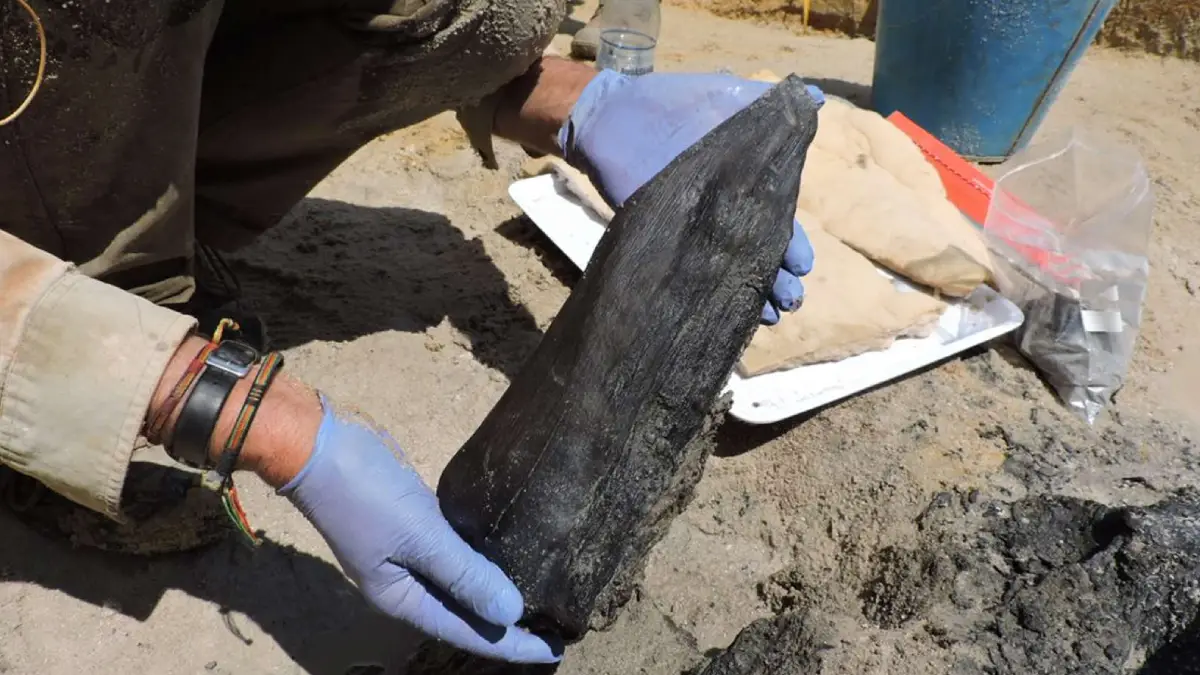Archaeologists Find Remarkable Proof of Early Woodworking Abilities Dating Back 476,000 Years
In a groundbreaking discovery, archaeologists from the University of Liverpool and Aberystwyth University have uncovered compelling evidence suggesting that Stone Age humans were constructing wooden structures much earlier than previously believed. Their findings, recently published in the prestigious journal Nature, shed light on the remarkable craftsmanship of our distant ancestors.
A Glimpse into Prehistoric Construction
The excavation took place at Kalambo Falls, Zambia, where researchers unearthed remarkably well-preserved wood fragments, estimated to be at least 476,000 years old—predating the emergence of Homo sapiens. What makes this discovery truly exceptional is the presence of stone tool cut-marks on the wooden remains, providing conclusive evidence that early humans expertly shaped and connected two substantial logs to create a structure. This structure is presumed to have served as the foundation of a platform or a segment of a dwelling.
Rewriting Human History
This discovery challenges the prevailing notion that Stone Age humans led nomadic lives devoid of sophisticated construction skills. Professor Larry Barham, from the University of Liverpool’s Department of Archaeology, Classics, and Egyptology, remarked, “Disregard the classification of the ‘Stone Age.’ Consider their remarkable achievements: crafting something novel and substantial from wood, employing their intellect, imagination, and expertise to shape an unprecedented creation. Their ingenuity extended to altering their environment, simplifying daily life, perhaps through the creation of a riverside platform for daily tasks. These individuals exhibited a striking similarity to our own capabilities.”
Illuminating the Past with Luminescence Dating
To establish the age of these remarkable wooden remnants, experts at Aberystwyth University employed luminescence dating techniques. These methods reveal the last time minerals in the sand surrounding the finds were exposed to sunlight. Professor Geoff Duller, who led this aspect of the research, stated, “Determining the age of discoveries from such a distant era poses significant challenges. To address this, we employed luminescence dating, a cutting-edge method with profound implications. It enables us to delve further into the past, reconstructing historical sites that provide valuable insights into the course of human evolution. Notably, Kalambo Falls’ site was previously excavated in the 1960s, unearthing analogous wooden artefacts. However, the inability to establish their age left the site’s true significance shrouded in uncertainty until now.”
Uncovering Deep Roots of Humanity
This remarkable discovery is part of the Deep Roots Of Humanity project, a comprehensive investigation into the development of human technology during the Stone Age. The project is generously funded by the UK’s Arts and Humanities Research Council and is a collaborative effort involving teams from Zambia’s National Heritage Conservation Commission, Livingstone Museum, Moto Moto Museum, and the National Museum, Lusaka.
Professor Barham expressed excitement about the future, stating, “Kalambo Falls stands as an exceptional archaeological site and a significant cultural treasure for Zambia. The Deep Roots research team eagerly anticipates the unveiling of further captivating discoveries from its waterlogged sands.”









